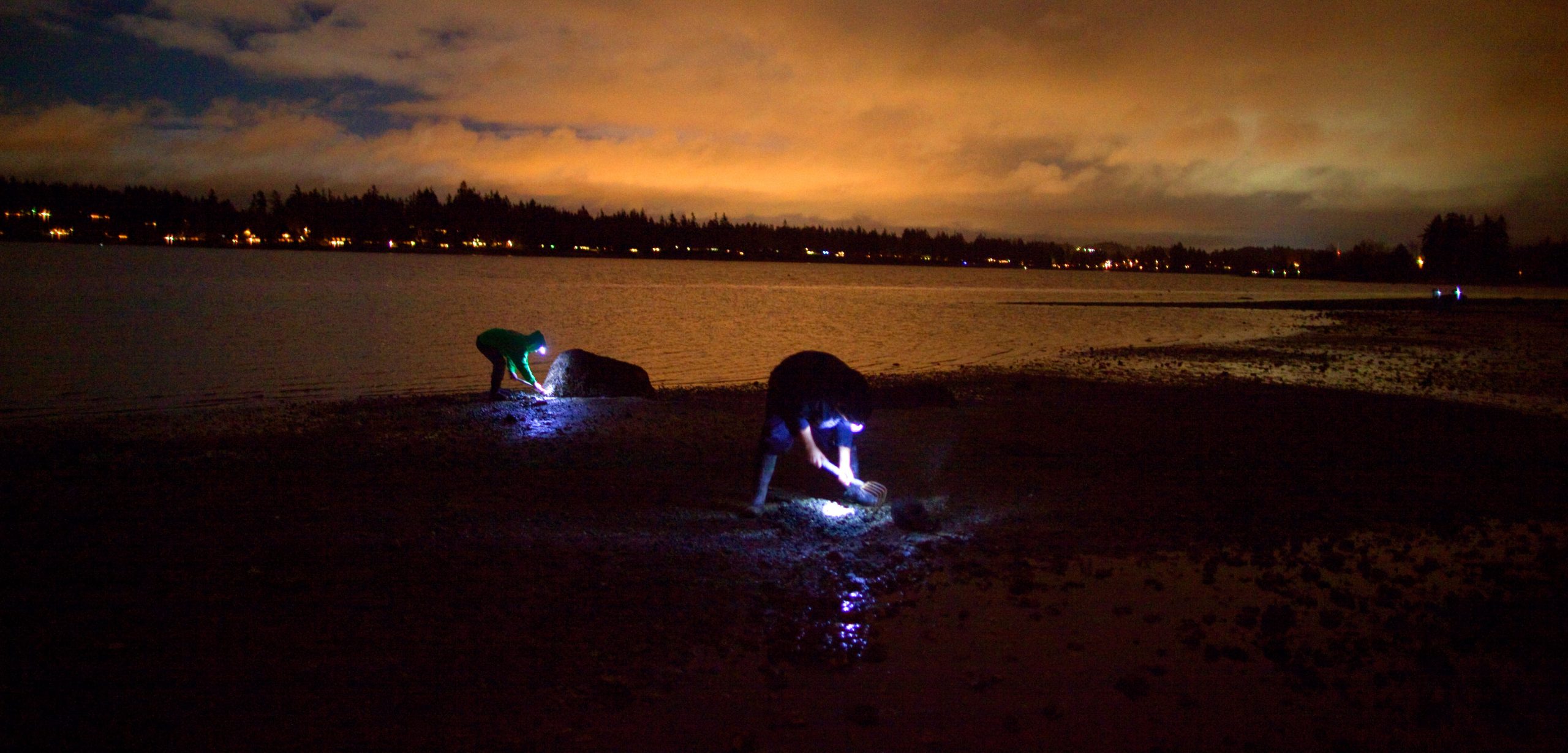Urbanization Might Give an Unexpected Boost to Biodiversity
A new study uses environmental DNA to open a genetic window on urban coastlines.
Article body copy
Puget Sound, the twisting inlet that separates Seattle from the Olympic Peninsula, bears the heavy tread marks of the human footprint: concrete sea walls line the shore; farms have replaced wetlands; and so much terrestrial pollution runs into the water that salmon contain cocaine. It’s obvious that humans have altered the landscape, but quantifying how the changes have helped or hindered the region’s complex ecosystem isn’t easy. “We never quite know what to count in the world,” acknowledges Ryan Kelly, an ecologist and lawyer at the University of Washington. “If you’re interested in environmental impacts, should you look at snails, or orcas, or neither?”
Technological advances offer a new way to tackle that question. By measuring traces of genetic material (such as skin cells and feces) that animals shed as they move through their environment, researchers can now survey thousands of species at once with scarcely more effort than it takes to dip a bottle in seawater. In a survey using this so-called “environmental DNA,” Kelly and his colleagues found, perhaps counterintuitively, that the urbanization of Puget Sound may not be the ecological catastrophe that environmentalists have long feared—at least not for all creatures.
The new study represents the latest twist in a years-long investigation of environmental DNA, or eDNA, by Kelly and his colleagues. Beginning in 2014, the researchers used eDNA to identify the occupants of a giant tank at the Monterey Bay Aquarium and, later, to survey wild fish in Monterey Bay. Having demonstrated the technique’s potential, Kelly turned his attention closer to home. For their most recent analysis, Kelly’s team collected one-liter water samples from eight Puget Sound eelgrass estuaries. The estuaries were fed by streams surrounded by different degrees of development, from dense Seattle neighborhoods to rural Vashon Island. Then Kelly’s crew took the samples back to the lab for analysis—where they received a surprise.
Kelly detected the genetic signatures of 1,664 different species in the Puget Sound samples, from porpoises to barnacles. Although one might expect biodiversity to be highest in pristine watersheds, that wasn’t what the researchers found. Instead, the richest collections of species congregated along more urban beaches. The trend was largely driven by a high diversity of clams and other mud-dwellers. “That might suggest that urbanization is somehow subsidizing those habitats—creating muddier mudflats, if you will,” Kelly says.
But don’t start advocating for paving over coastlines just yet. The researchers also found that the species composition changed little from point to point within the more urbanized sites, like adjacent suburban subdivisions chockablock with similar-looking houses. And, as always, correlation doesn’t equal causation: just because developed sites have more mud-loving bivalves doesn’t mean urbanization should get the credit. “It could mean that humans tend to settle in more protected areas that have these mudflats,” Kelly says.
While the study’s conclusions may be murky, the potential of its method is unambiguously exciting. Among the intrigued scientists is Sean McDonald, an ecologist at the University of Washington. McDonald was not involved in the new eDNA study, but he hopes to apply the technology to his own research on the impacts of shellfish aquaculture on Puget Sound’s shoreline, and on the possible arrival of voracious European green crabs. McDonald has set up a citizen science team to scour Washington’s coastline for the invasive crustaceans, and he says the addition of eDNA surveys could expedite the squad’s needle-in-a-haystack hunt.
“Right now—before [the crab] has really gotten established—is the best time to stop an invasion, but also the hardest time to detect it,” McDonald says. “The value of eDNA is that if we were able to detect a green crab signal in an estuary, we could put additional effort into that location.”
Kelly, too, is beginning to explore new eDNA horizons. An upcoming project, designed to understand how ocean acidification affects ecosystems, will sample coastal sites in Washington and British Columbia, where the upwelling of acidic waters is already killing oyster larvae. “DNA should allow us to see, in a fairly sensitive way, how changing water chemistry is affecting these communities, and what we might be able to do about it,” Kelly says. “This technology should be very important in linking science with policy.”

